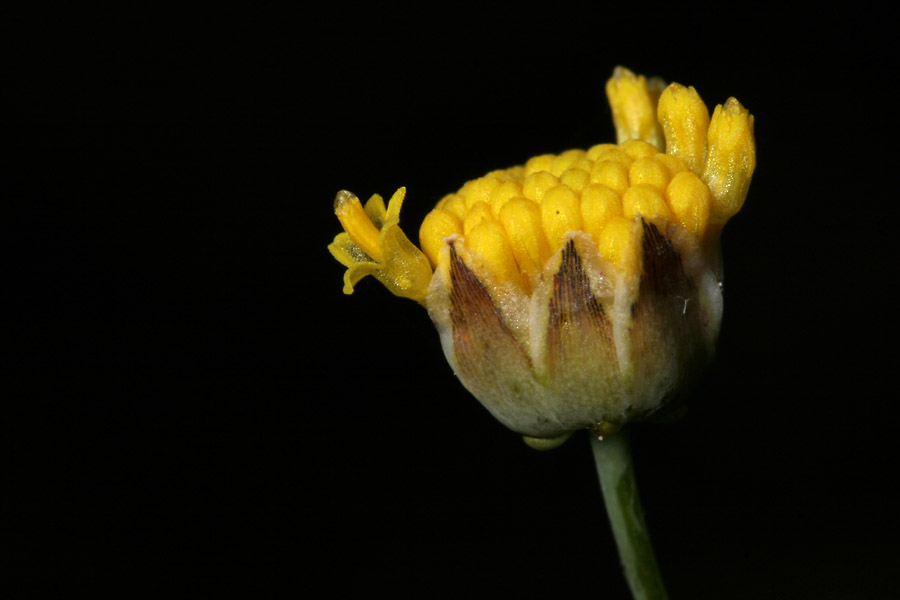
|
Family: Asteraceae |
Annuals, perennials, or subshrubs, 10-70+ cm. Stems usually 1, erect, branched distally or ± throughout. Leaves mostly basal, basal and cauline, or mostly cauline; mostly opposite (distal rarely alternate); blades usually 1(-3)-pinnately lobed (ultimate lobes oblanceolate to filiform), faces usually glabrous, rarely hairy. Heads radiate or discoid, borne singly or in loose, corymbiform arrays. Calyculi of 3-8+ distinct, usually spreading or reflexed, usually linear to subulate, herbaceous bractlets. Involucres hemispheric to urceolate, 4-15+ mm diam. Phyllaries 5-8 in ± 2 series, persistent, connate 1/5-7/8+ their lengths, lance-ovate to ovate, ± equal, ± leathery to membranous, margins (of distinct apices) scarious. Receptacles flat to convex, paleate; paleae falling, (whitish with red-brown striae, each ± appressed to abaxial face of subtended cypsela), obovate to oblong, scarious. Ray florets 0 or ca. 8, neuter; corollas yellow or red-brown, or bicolored (yellow and red-brown). Disc florets 20-100+, bisexual, fertile; corollas yellow (with red-brown nerves) or red-brown, either with throats equal to or longer than 5, ± deltate, ± equal lobes, or with throats shorter than 5, ± lance-linear, ± unequal lobes (in either form, the abaxial sinus usually ± deeper than others). Cypselae (dark red-brown or stramineous) outer often arcuate, shorter, inner more columnar, usually some or all ± obcompressed (each usually shed together with its subtending palea), faces smooth or papillate to tuberculate or verrucate, margins sometimes ± winged; pappi 0, or persistent, of 2 retrorsely ciliate, subulate scales or awns. x = 12. |
This project was made possible in part by the Institute of Museum and Library Services [MG-70-19-0057-19].
Powered by Symbiota



